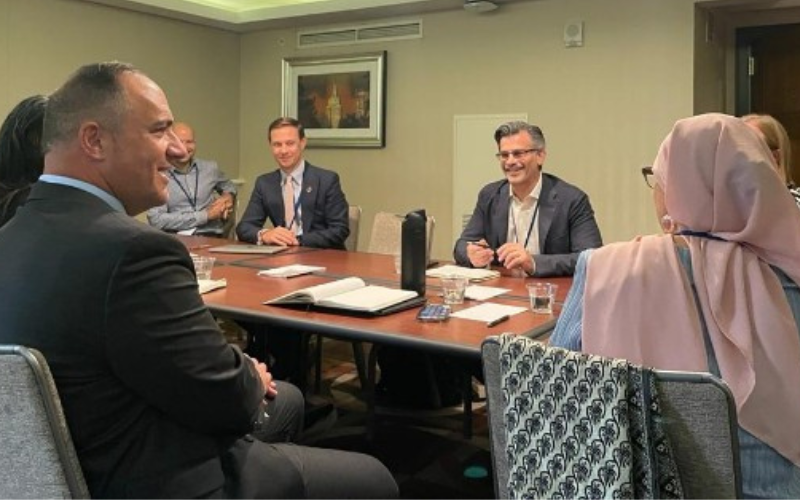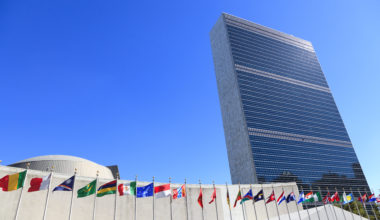Everyone is talking about algorithms. With good reason. We are all trying to figure out the impacts that a digital world has on our conversations and our convictions.
But an unexpected algorithm took hold during a meeting I helped facilitate yesterday in New York. It has changed the way I think about things. Especially how we bring people together to talk and advocate and work together on important issues.
I had the opportunity to moderate a conversation at the 2022 Concordia Summit. The meeting was called “Restoring Trust and Dialogue With and Between Faith and Media.”. The dynamic and inspiring conversation focused on fostering trust and dialogue between faith and media, and the participants poured their insights into the gap between these two vital pillars of a free and flourishing society.
No sooner had the conversation started, than a list of what the “productive algorithm” for building unlikely partnerships could be. From the outset, the importance of inviting a diversity of perspectives and promoting coalition building dominated the conversation. Several of the roundtable participants articulated in their own way the “power of plurality” in a partnership and came to the consensus that a collective effort produces the greatest impact. Coalitions of various backgrounds and beliefs also protect any one entity from being accused of “agenda-pushing.” Of course, a single group may spark a movement or initiative, but to gain substantial momentum, it must bring in a chorus of different pitches to sing a harmonized melody.
In our current moment of fracture and turmoil, this notion of coalition building between disparate groups seems to be at odds with the powerful algorithms that sow hyperdivision, antagonism, and tribalism across digital channels. One person sitting at the table remarked that much of the media is concerned with creating an audience of one–an audience that acquires a taste for certain content and can be counted on to “eat” (pay for) that content. This is not an indictment of the media; rather, it acknowledges the challenges of the current media landscape and underscores the need to challenge the current algorithm and devise mutually-beneficial solutions that result in more balanced and nuanced content.
At this juncture, the roundtable morphed into a sort of laboratory fueled by verve, creativity, and focused brilliance. Together, we roughed out a prototype of an inventive new algorithm that could foster unlikely partnerships across supposed chasms of division and distrust. This proposed formula consisted of three core components: 1) Support (including funding), 2) Scale of Voices, and 3) Increasing the Frequency of Faith Fluent Content. The first element more or less speaks for itself, but by welcoming more voices into your cause, you add more potential streams for funding. However, having a large and diverse coalition goes far beyond the financial benefits and gives crucial dimension and legitimacy to your initiative or goal. A multiplicity of perspectives boosts innovation and can create coalescence where it was previously dismissed.
The third ingredient, no surprise, is of great interest to me. The bilateral avoidance and distrust between the faith and media sectors precludes a more textured and fair portrayal of religion in the news and popular entertainment. It’s not the players that are at fault; the machinery is broken.
This human algorithm merits hours and hours more of discussion. Conversations like this need time. And I would have benefited from a lot more time with this collection of exceptional minds. Coming from a variety of sectors, these highly-respected and influential voices expanded our understanding of how a stronger relationship between faith and media can be forged and transformed, taking the conversation in unexpected but compelling directions. I left hopeful and invigorated by this group’s commitment to forming unlikely partnerships in unexpected ways that embrace both our digital reality and our enduring human spirit.
Faith and media have been separated from each other for far too long–it’s time to close that gap and reach across differences to establish unlikely yet uplifting connections. They each have individual roles, and there are boundaries that can and should be respected. But there are artificial blockages that get in the way of understanding. And people want more. There is so much hope and love to tap into, and that’s why I am inspired by the people coming around the Faith and Media Initiative and the powerful coalitions that are building on these ideas.
Faith and media can nourish each other; instead of starving themselves in misunderstanding and suspicion. Their union can help us learn how to be together not in spite of our differences but because of them.


